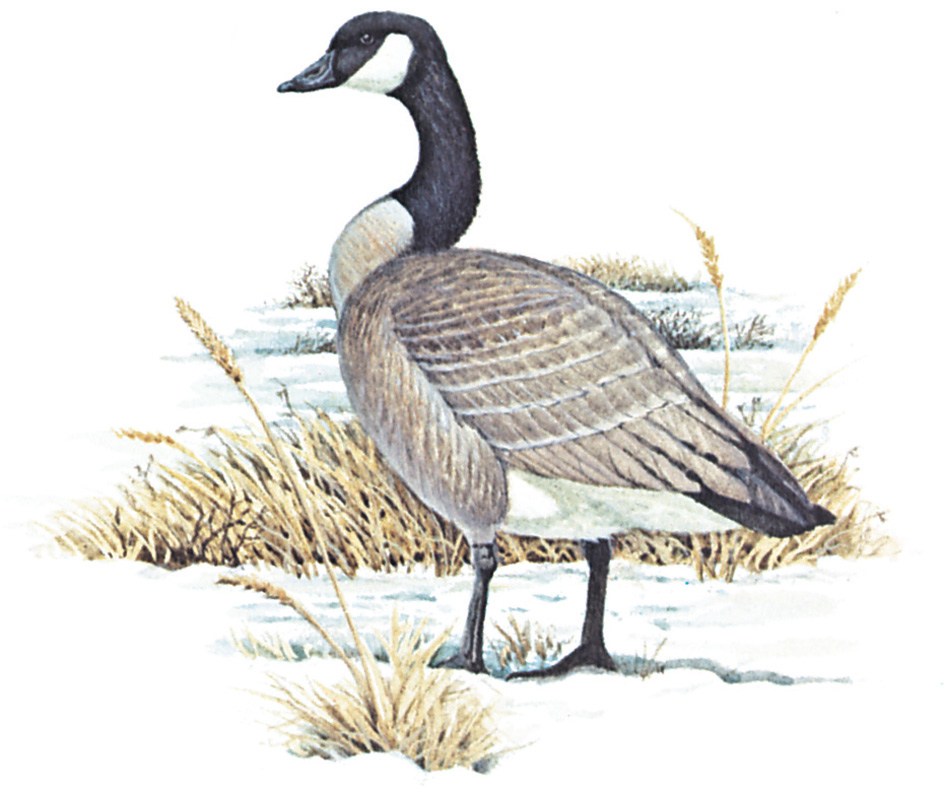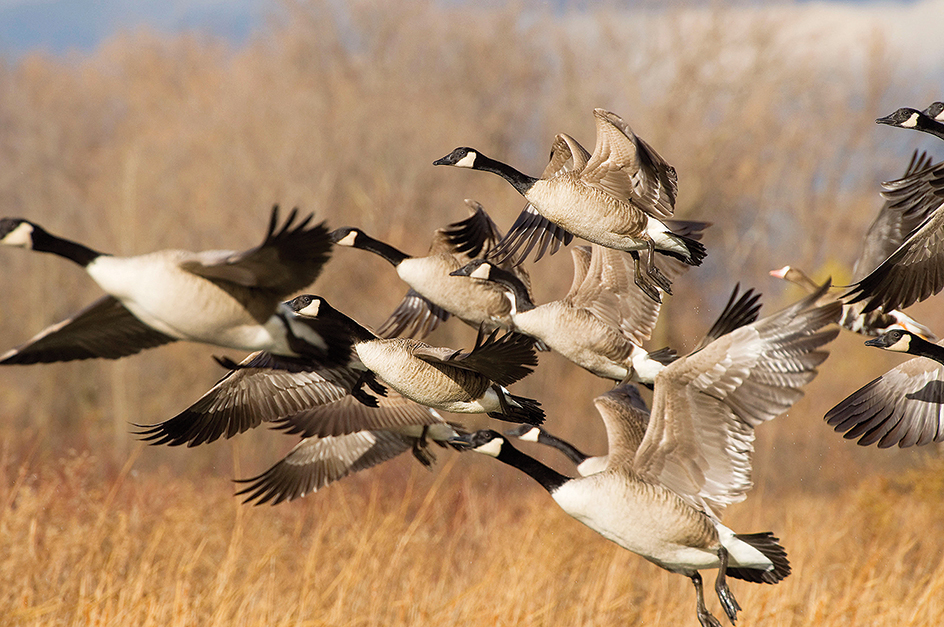Canada goose is the common wild goose of North America. It grows 22 to 43 inches (55 to 110 centimeters) long. The Canada goose has a black neck and head and white cheeks. Its tail and wings are black, its back and chest are grayish-brown, and its belly and rump are white. There are about 10 kinds of Canada geese. They weigh from about 3 pounds (1.4 kilograms) to about 15 pounds (7 kilograms).

Canada geese spend the spring and summer from Alaska and far northern Canada to the northern half of the United States. In the fall, many of the geese migrate to warmer regions as far south as northern Mexico. Canada geese have been introduced into New Zealand, Norway, Sweden, and the United Kingdom.

Canada geese breed in the spring. They make nests of branches, twigs, grass, and weeds, often on small islands in marshes or ponds. The female usually lays from four to six dull-white eggs. The young live with their parents for about a year after hatching and then begin to look for a mate. They keep the same mates for life. Family members often continue to live together, forming extended families of related geese. Canada geese eat marsh grasses and crop plants, especially corn, wheat, and other grains.
Since the mid-1950’s, the overall population of Canada geese has increased greatly in North America. This increase has occurred largely because of a rise in the amount of acreage used for corn production and the establishment of numerous wildlife refuges. Today, many nonmigratory populations of Canada geese live year-round in suburban and rural areas of the northern United States. These geese sometimes damage crops, and their droppings can be a nuisance.
Loading the player...Canada goose
See also Goose.
